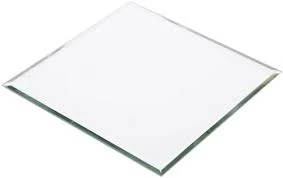

Understanding Low-E Soft Coat Glass Benefits and Applications
Low-E soft coat glass is an advanced glazing technology that has transformed the way we think about energy efficiency in buildings. As the world becomes increasingly conscious of environmental issues and energy consumption, low-emissivity (Low-E) glass has gained significant traction in both residential and commercial applications. This article delves into what Low-E soft coat glass is, its benefits, and where it is commonly used.
What is Low-E Soft Coat Glass?
Low-E soft coat glass is a type of glass treated with a microscopically thin, transparent coating designed to reflect heat while allowing light to pass through. The soft coat refers to the method of applying the Low-E coating during a vacuum deposition process, which results in a thicker and more effective layer than its hard coat counterpart. This coating is predominantly made from silver, which is an excellent conductor of energy, and it significantly enhances the thermal performance of glazed surfaces.
How Does It Work?
The primary function of Low-E soft coat glass is to minimize the amount of infrared and ultraviolet light that comes through while maximizing visible light transmission. In essence, it reflects heat back to its source. In colder climates, this means keeping the heat generated within indoor spaces from escaping, while in warmer climates, it helps reject outdoor heat, making indoor environments more comfortable without relying heavily on air conditioning. This dual functionality makes Low-E soft coat glass an ideal solution for various climates.
Benefits of Low-E Soft Coat Glass
1. Energy Efficiency One of the most significant advantages of Low-E soft coat glass is its ability to reduce energy consumption. Buildings utilizes less electricity for heating and cooling, which aids in lowering energy bills and lessens environmental impact through reduced carbon footprint.
2. Comfort With reduced heat transfer, indoor spaces maintain a more stable and comfortable temperature throughout the year. This enhancement helps eliminate cold drafts and hot spots near windows, contributing to an overall improved indoor climate.

3. UV Protection Low-E soft coat glass effectively blocks harmful ultraviolet rays, which can cause fading and damage to furniture, artwork, and carpeting. This extended lifespan of interior finishes can save homeowners and businesses significant money over time.
4. Aesthetic Appeal Despite its functionality, Low-E soft coat glass does not compromise aesthetic value. It allows for a bright and airy atmosphere without sacrificing style. The clarity and transparency maintain the view outside while ensuring energy efficiency.
5. Environmental Impact As energy-efficient building standards become a focus in sustainable development, Low-E soft coat glass is a go-to option for architects and builders looking to create eco-friendly buildings. Its implementation aligns with global initiatives aimed at reducing greenhouse gas emissions.
Applications of Low-E Soft Coat Glass
Due to its advantageous properties, Low-E soft coat glass is widely used in various applications
- Residential Buildings Homeowners often select Low-E glass for their windows and patio doors, seeking improved comfort and lower energy bills. - Commercial Construction Many office buildings and retail establishments utilize this glass type to create energy-efficient workspaces that benefit employees and conserve resources. - Skylights and Curtain Walls Architects often integrate Low-E soft coat glass into skylights and curtain walls, allowing natural light to flood interiors while maintaining design integrity and energy efficiency.
Conclusion
In summary, Low-E soft coat glass is a revolutionary technology that combines excellent thermal performance with aesthetic appeal. As the demand for energy-efficient solutions continues to rise, the adoption of Low-E glass is likely to become even more prevalent. Whether in homes or commercial settings, its benefits are undeniable, making it a preferred choice for architects, builders, and homeowners alike in the quest for sustainability and comfort. As we continue to face global energy challenges, innovations like Low-E soft coat glass are essential in paving the way toward a more energy-efficient future.